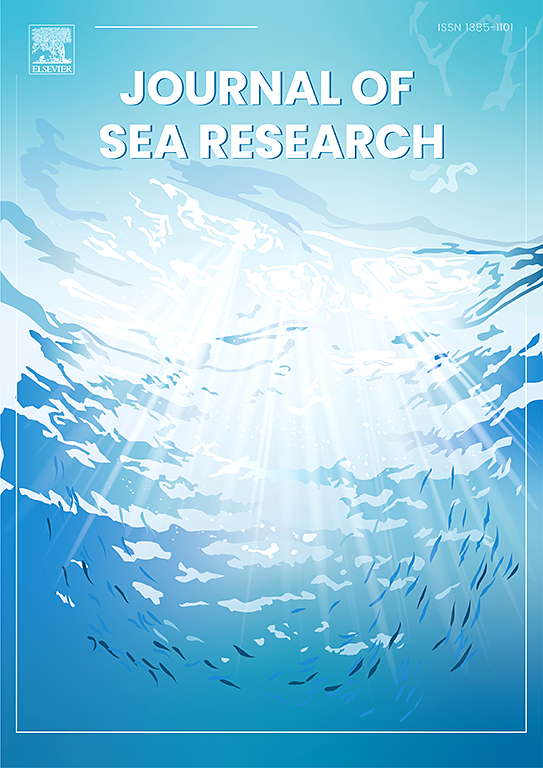Size-disaggregated landings of Pama croaker (Otolithoides pama) at a fish collection station in the Gulf of Mottama, Myanmar: An eight-year analysis
IF 2.9
4区 地球科学
Q2 MARINE & FRESHWATER BIOLOGY
引用次数: 0
Abstract
Small-scale fisheries play a crucial role in sustaining coastal communities, yet they face significant challenges due to illegal fishing and a lack of comprehensive data for effective management. This study presents an eight-year analysis (2016–2023) of landings of Pama croaker (Otolithoides pama), a key economic species for local livelihoods in the Gulf of Mottama, Myanmar. Using size-disaggregated data from a fish collection station operated by Mawlamyine Holding Limited, we assessed changes in population structure, seasonal landing patterns, and economic contributions. Total landings increased from 25,930 kg in 2016 to 139,618 kg in 2023; however, the number of individuals declined, indicating a shift toward the capture of larger fish, likely recruiting from earlier juvenile stages (size categories 1 and 2). Analysis of size composition further revealed a decline in juvenile recruitment in recent years. Time-series analysis showed bimodal landing peaks in June–July and December–January, likely influenced by monsoonal inputs and spawning migrations. Economic valuation estimated annual gross income per fisher between USD 1732 and USD 5692, with total fishery value reaching approximately USD 10 million annually across the Gulf. Although fisheries co-management efforts played a crucial role in increasing fish landings from 2017 through 2023, recent political instability and weakened enforcement have posed a threat to long-term sustainability, enabling the resurgence of destructive fishing practices. Our findings underscore the importance of strengthening co-management systems and restore enforcement patrols to ensure the resilience of Pama croaker stocks and the livelihoods of coastal fishing communities.
在缅甸摩塔马湾的一个鱼类收集站,大小分类的帕马黄花鱼(Otolithoides Pama):一项为期八年的分析
小规模渔业在维持沿海社区生计方面发挥着至关重要的作用,但由于非法捕捞和缺乏有效管理的综合数据,小规模渔业面临着重大挑战。本研究对缅甸摩塔马湾当地生计的重要经济物种帕马鱼(Otolithoides Pama)的登陆进行了为期8年(2016-2023)的分析。利用Mawlamyine Holding Limited运营的鱼类收集站的大小分类数据,我们评估了种群结构、季节性登陆模式和经济贡献的变化。总着陆量从2016年的25,930公斤增加到2023年的139,618公斤;然而,个体数量下降,表明转向捕获较大的鱼,可能是从早期的幼鱼阶段(尺寸类别1和2)招募。对尺寸组成的分析进一步揭示了近年来幼鱼招募的下降。时间序列分析显示,6 - 7月和12 - 1月是双峰登陆高峰,可能受季风输入和产卵迁徙的影响。经济评估估计,每个渔民的年总收入在1732美元至5692美元之间,整个海湾地区每年的渔业总价值约为1000万美元。尽管从2017年到2023年,渔业共同管理工作在增加渔获量方面发挥了至关重要的作用,但最近的政治不稳定和执法力度减弱对长期可持续性构成了威胁,使破坏性捕捞行为重新抬头。我们的研究结果强调了加强共同管理制度和恢复执法巡逻的重要性,以确保帕马鱼种群的恢复力和沿海渔业社区的生计。
本文章由计算机程序翻译,如有差异,请以英文原文为准。
求助全文
约1分钟内获得全文
求助全文
来源期刊

Journal of Sea Research
地学-海洋学
CiteScore
3.20
自引率
5.00%
发文量
86
审稿时长
6-12 weeks
期刊介绍:
The Journal of Sea Research is an international and multidisciplinary periodical on marine research, with an emphasis on the functioning of marine ecosystems in coastal and shelf seas, including intertidal, estuarine and brackish environments. As several subdisciplines add to this aim, manuscripts are welcome from the fields of marine biology, marine chemistry, marine sedimentology and physical oceanography, provided they add to the understanding of ecosystem processes.
 求助内容:
求助内容: 应助结果提醒方式:
应助结果提醒方式:


